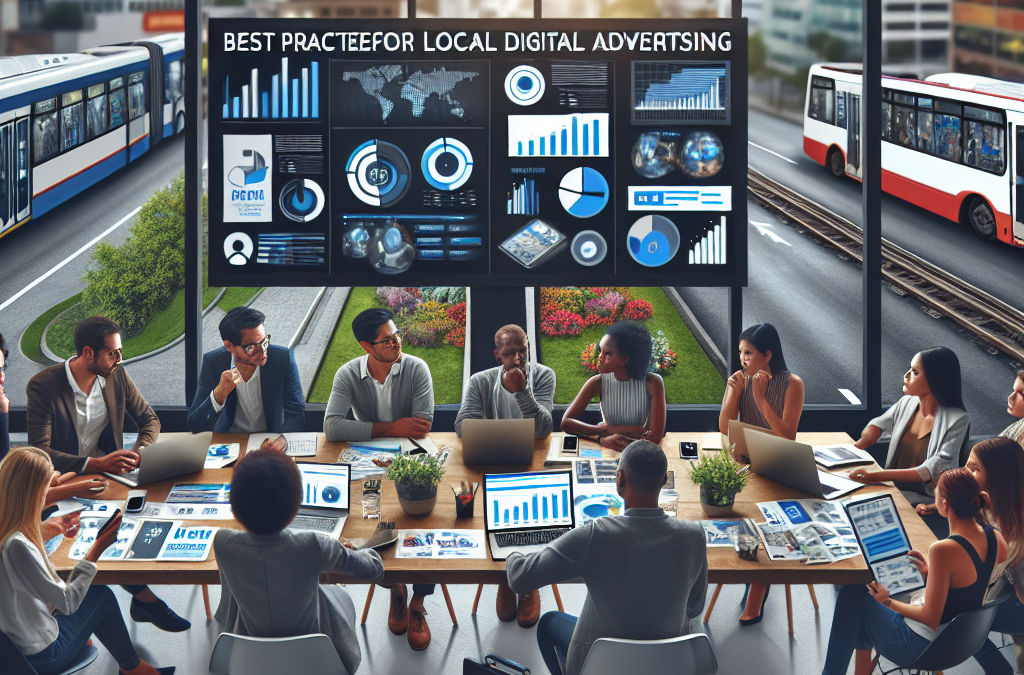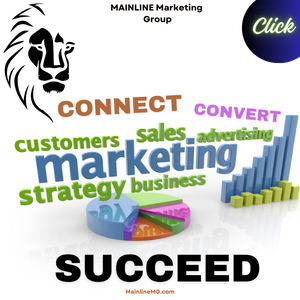Know Your Audience
Define Your Target Demographics
First off, let’s dive into the nitty-gritty of knowing your audience. You can’t hit a target if you don’t know where it is, right? I always start by creating a detailed customer persona that embodies who I want to reach. Think about age, gender, location, interests—basically everything that shapes their buying decisions. Trust me, getting this right is half the battle.
Next, dig into your existing data. Use tools like Google Analytics or social media insights to see who’s already engaging with your brand. You might be surprised by the demographics that are gravitating toward your products or services. This info is gold! It helps refine your strategies as you tailor your advertising to meet their preferences.
Lastly, gather feedback directly from your audience. Surveys, social media polls, or even casual conversations can provide valuable first-hand insights. Understanding their needs and motivations allows you to speak their language in your advertising, which increases the likelihood of engagement and conversion.
Analyze Local Competition
Now that you know who you’re marketing to, it’s time to take a peek at the local competition. Finding out what your competitors are doing—both good and bad—can provide a roadmap for your own campaigns. You can identify gaps in their strategies that you can exploit. You know, like finding out which keywords they’re ranking for and adjusting your approach accordingly!
Use tools like SEMrush or Moz to analyze their online presence. Check their website, social media engagement, and which ads they’re running. Getting the lay of the land gives you insights into what works in your local market and what doesn’t. Sometimes, you’ll notice that they flame out on platforms that you could dominate!
Another brilliant move is to look at customer reviews. See what customers appreciate or what they complain about. This can massively inform your advertising strategy—be it showcasing your unique offerings or addressing pain points that local consumers are expressing in feedback.
Create Localized Content
Creating content that resonates with your local audience can spearhead your digital advertising efforts. When I craft my campaigns, I always try to localize my content to reflect the community’s vibe and values. Use local dialects, idioms, and references that your audience can relate to. It’s like a warm hug in ad form!
Furthermore, incorporate local events or cultural nods into your content. For instance, if there’s a popular festival or a sporting event, integrate those themes and sentiments into your messaging. This allows you to capture attention while enhancing community engagement—a real win-win.
Lastly, always make sure to include local SEO practices in your content. Use geo-specific keywords to make your offering more discoverable. Your content shouldn’t only sound local; it should actually be optimized for local searches. Be sure to leverage features like Google My Business to enhance your visibility!
Utilize Local SEO Strategies
Optimize Your Website for Local Search
Alright, let’s talk about the importance of a killer local SEO setup. First thing’s first—make sure your website is optimized for local search. That means incorporating location-based keywords throughout your site, especially in titles, headings, and meta descriptions. This is how folks in your area will find you when they’re browsing online!
Additionally, it’s crucial to maintain NAP consistency—Name, Address, Phone Number—across all platforms. If these details differ on your site, social media, or directories, search engines might get confused about your legitimacy. And even worse, potential customers could hit a brick wall trying to contact you.
Let’s not forget about creating location-based content. Writing blog posts about local events, partnerships, or even customer testimonials can enhance your relevancy. The best part? This kind of content keeps page visitors engaged, boosts your SEO rankings, and establishes your authority in the local market.
Leverage Google My Business
Honestly, I can’t stress enough how valuable Google My Business is. It’s like your calling card on the world’s largest search engine. Make sure you claim your business and fill out all relevant info—like address, hours, reviews, and photos. This maximizes your visibility in local searches and gives you an edge over competitors who might overlook it.
Encourage satisfied customers to leave positive reviews. Not only do these build credibility, but they also impact your rankings. More positive reviews equal better visibility. It’s community-driven advertising at its best! Plus, showcasing these reviews in your ads can enhance trust and attract new customers.
Also, take advantage of posts on Google My Business to share updates or promotions. Regularly engaging with this feature keeps your audience informed about offerings and keeps your listing fresh in search queries. It’s a manageable way to enhance your local presence without breaking a sweat!
Use Local PPC Campaigns
PPC (pay-per-click) ads can be a treasure trove of effective local advertising, especially when you target specific locations. I love using geotargeting to serve my ads directly to those in my community. It’s not just about reaching more eyes; it’s about reaching the *right* eyes!
Sit down and analyze your ad spend to focus on local keywords and phrases that potential customers are actually using. Using tools like Google Keyword Planner can help you zero in on the most effective terms for your region. Ads that show up when someone nearby searches for your service? That’s golden!
Lastly, monitor your campaigns regularly. Analyze data to tweak your ads based on their performance. Sometimes it’s just small adjustments—maybe swapping out images or tweaking the ad copy—that can lead to significantly better results. Persistence and adaptability will turn your advertising into a powerhouse!
Engage with Your Community
Active Social Media Engagement
Let’s get social! Engaging with your local audience on social media platforms is essential. You gotta be where the conversations are happening. I make it a priority to actively engage in platforms like Facebook, Instagram, and Twitter. Post regularly and authentically—don’t just sell, but connect!
Creating posts that showcase local events, happenings, or shoutouts to local businesses can generate buzz within your community. It’s about building lasting relationships, not just a one-time sale. Plus, it gives your brand personality, and people are drawn to that.
Also, make sure to respond to comments and messages promptly. This kind of interaction builds trust and shows potential customers that you care about them. It’s a small step with massive rewards—keep that relationship strong and watch your community grow!
Participate in Local Events
Event participation is a strategy that’s often overlooked, but boy, is it impactful! Attend local fairs, farmer’s markets, and community gatherings. If you can sponsor or even just set up a booth, you’re showing that you’re invested in the community, which goes a long way.
Connecting face-to-face often makes a lasting impression. Use these opportunities to collect emails for your newsletter, hand out promotional materials, or even provide a giveaway. It’s not just about selling; it’s about being a part of people’s lives.
Remember, leveraging these events on your digital platforms is a must. Share your experiences online and tag local businesses or other participants. Creating a narrative around your participation can further bolster your reputation as a community-centered brand.
Build Partnerships with Local Businesses
Collaborating with other local businesses is a win-win! These partnerships can help you reach wider audiences effectively and economically. If there’s a complementary business in town, consider cross-promotions or joint events. Sharing each other’s audiences can lead to unique advertising opportunities that heighten visibility.
In my own experiences, I’ve partnered with local gyms for health product giveaways or collaborated with nearby coffee shops for promotional events. These ties not only elevate your visibility but instill goodwill within your community as well.
Don’t forget to promote these partnerships on your social channels and encourage partners to do the same! Everyone loves a success story, and a partnership can often become just that if handled right.
Monitor and Measure Results
Leverage Analytics Tools
Here’s where the rubber meets the road: monitoring and measuring your results! I can’t stress enough the importance of using analytics tools. Google Analytics, social media insights, and PPC dashboards will help you make sense of all the data coming in. Keep an eye on how your ads are performing, which posts are getting the most engagement, and what’s driving traffic to your site.
Monitoring gives you crucial insights into customer behavior. If you notice something isn’t working as planned, you can pivot quickly. It’s about continually adapting and improving your campaigns—what works today might not work tomorrow.
Moreover, regularly updating your benchmarks based on this data will allow for more targeted and effective advertising strategies. You want to fine-tune your approach, ensuring every dollar is well spent.
Set Clear KPIs
Key Performance Indicators (KPIs) are essential for gauging success. Define what success looks like for you. Is it increased website traffic, enhanced social media engagement, lead generation, or direct sales? Setting these clear indicators means you have something to aim for and helps measure your effectiveness.
Every quarter, I sit down to assess these KPIs to see where I stand. If sales are plummeting, but social media engagement is sky-high, maybe I’m getting folks interested but failing to convert. Personalizing your strategies based on these indicators can drastically improve your results in the long run.
Also, sharing these KPIs with your team keeps everyone aligned, creating a coherent strategy focused on achieving those goals together. Communication is key, folks!
Adapt and Improve Over Time
Last but definitely not least, remember that local digital advertising isn’t a “set it and forget it” game. It’s an evolving process that requires ongoing refinement. Every campaign provides new insights and learnings you can use to improve the next one.
Don’t be afraid to experiment! Sometimes, the zaniest ideas can yield the most astonishing results. I love trying new strategies, be it a quirky social media campaign or a wild PPC tactic. Each experiment is a chance to learn, and who knows, the next big idea could be right around the corner.
Stay flexible, adapt to changes, and maintain an open mind. The digital landscape is always shifting, and the businesses that succeed are the ones that can pivot as needed. That adaptability is what keeps your advertising strategies fresh and effective.
FAQ
1. Why is knowing my audience crucial for local digital advertising?
Knowing your audience helps you tailor your messaging and ads to meet the specific needs and preferences of the group you want to reach. This makes your advertising efforts more effective and increases the chances of converting leads into customers.
2. How can I leverage Google My Business for local advertising?
Google My Business allows you to manage your online presence across Google Search and Maps. By optimizing your listing with accurate information, photos, and customer reviews, you can significantly enhance your visibility and attract more local customers to your business.
3. What role does local SEO play in digital advertising?
Local SEO is essential for ensuring that your business appears in relevant local searches. Optimizing your website and content for local keywords and phrases helps you attract more traffic from users who are specifically looking for products or services in your area.
4. How do I measure the success of my local digital advertising efforts?
You can measure success by leveraging analytics tools to track key performance indicators (KPIs) such as website traffic, engagement rates, and conversion rates. Regularly analyzing this data allows you to adjust your strategies for better results.
5. Can collaborating with other local businesses benefit my advertising efforts?
Absolutely! Collaborating with other local businesses can help you reach a wider audience and create joint marketing opportunities. It fosters community engagement and often leads to increased visibility for both partners involved.


